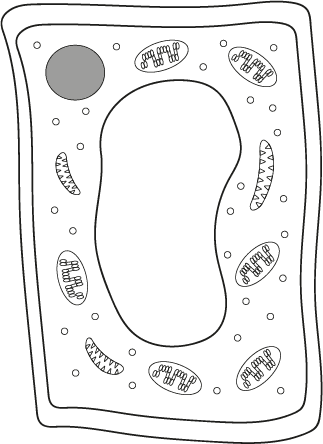Eukaryotic and prokaryotic organisms
I can describe differences in the cell structures of eukaryotic and prokaryotic organisms.
Eukaryotic and prokaryotic organisms
I can describe differences in the cell structures of eukaryotic and prokaryotic organisms.
These resources will be removed by end of Summer Term 2025.
Lesson details
Key learning points
- Eukaryotic cells store their genetic material in a nucleus and have membrane bound sub-cellular structures.
- Eukaryotic organisms can be unicellular or multicellular.
- Examples of eukaryotic and prokaryotic organisms.
- Prokaryotic cells do not have membrane bound sub-cellular structures including a nucleus; DNA is floating in cytoplasm.
- Prokaryotic organisms are unicellular.
Keywords
Eukaryotic - Eukaryotic cells contain a membrane bound nucleus; this contains the DNA.
Multicellular - Organisms that are made up of more than one cell are multicellular.
Prokaryotic - Prokaryotic cells have no membrane bound nucleus; DNA is free floating in the cytoplasm.
Unicellular - An organism that consists of only one cell is unicellular.
Common misconception
All eukaryotic cells are multicellular.
Addressed within the slides to specifically mention that some eukaryotic organisms are unicellular.
To help you plan your year 10 biology lesson on: Eukaryotic and prokaryotic organisms, download all teaching resources for free and adapt to suit your pupils' needs...
To help you plan your year 10 biology lesson on: Eukaryotic and prokaryotic organisms, download all teaching resources for free and adapt to suit your pupils' needs.
The starter quiz will activate and check your pupils' prior knowledge, with versions available both with and without answers in PDF format.
We use learning cycles to break down learning into key concepts or ideas linked to the learning outcome. Each learning cycle features explanations with checks for understanding and practice tasks with feedback. All of this is found in our slide decks, ready for you to download and edit. The practice tasks are also available as printable worksheets and some lessons have additional materials with extra material you might need for teaching the lesson.
The assessment exit quiz will test your pupils' understanding of the key learning points.
Our video is a tool for planning, showing how other teachers might teach the lesson, offering helpful tips, modelled explanations and inspiration for your own delivery in the classroom. Plus, you can set it as homework or revision for pupils and keep their learning on track by sharing an online pupil version of this lesson.
Explore more key stage 4 biology lessons from the Eukaryotic and prokaryotic cells unit, dive into the full secondary biology curriculum, or learn more about lesson planning.

Licence
Starter quiz
6 Questions



a unicellular microorganism that contains no nucleus
an organism where some cells contains chloroplasts
an organism where cells contain no cell wall
Exit quiz
6 Questions
an organism with a membrane bound nucleus
an organism with no membrane bound nucleus
an organism made up of many cells
an organism made up of a single cell


